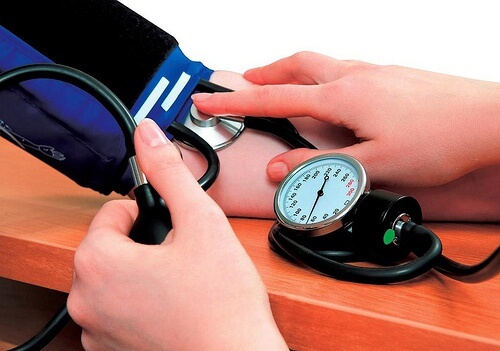High Blood Pressure in Children: Symptoms and Prevention

When we hear that someone has high blood pressure, we usually think of adults. Generally, we think they’re overweight and don’t exercise. However, more and more school age children are having high blood pressure today.
If you look into it a little deeper, you’ll find that this condition can appear at any age. Luckily, the percentage of children with high blood pressure is still very low. However, it’s important that you’re alert. According to data from the Spanish Association of Pediatrics, many people don’t notice this condition because it’s under-diagnosed.
It’s good to know that there are two types of blood pressure. There’s one that reaches high intensity to pump blood throughout your body. This is called systolic pressure. Then there’s diastolic pressure, which is where the heart relaxes to take blood between beats.
High Blood Pressure in Children is a Warning Sign
Scientists are still researching the causes of hypertension in children. In most cases, except the ones relating to obesity, they can’t find a specific cause. That’s why it’s so difficult to diagnose high blood pressure.
What is clear is that when hypertension becomes a problem, it’s usually a warning sign for another serious health problem. It could be a signal for kidney disease, heart abnormalities, or nervous system or endocrine problems.
Surely, high blood pressure develops with age. This is why a child may have high blood pressure but not show any symptoms. Then, over time, their condition may worsen.

What Are the Most Common Signs and Symptoms of High Blood Pressure?
If your doctor thinks your child might have high blood pressure, the doctor can test it through some routine exams. The best method is to simply test his or her blood pressure with a blood pressure monitor. Generally, this is how doctors detect hypertension.
On the other hand, this condition doesn’t show visible problems, which makes it harder to notice at home. However, these symptoms may be indicators of high blood pressure:
- Dizziness after doing physical activities.
- Constant headaches
- Difficulty breathing deeply.
- Constant fatigue.
- Blurry vision or confusion.
Recommendations to Treat High Blood Pressure
If your child has high blood pressure due to obesity, the first thing to do is help the child lose weight. Losing weight will not only help his blood pressure, but also benefit his overall health.
Then, you should monitor and limit his salt intake. Don’t put salt shakers on the table, and check the salt levels of his foods. By simply watching your child’s salt intake, you can reduce mild hypertension. You can also lower even severe blood pressure levels.
An overweight child is much more likely to have other health problems in addition to high blood pressure. To avoid this, help him or her create good eating and exercise habits. They are key to healthy development.
Making an exercise routine for your child will also be a safe suggestion from the pediatrician. It’s proven that physical activity helps regulate blood pressure. Therefore, a moderate exercise routine can help childhood hypertension.

Prevention Makes a Difference
It’s very important to catch hypertension at the beginning. Nowadays, it’s recommended to start controlling children’s blood pressure starting from 3 years old. It’s extra important for babies who were born early or with low weight.
It’s important for parents to know that they need to take care of this condition right away. Ignoring or neglecting it will only make the condition worse over the years.
This problem can cause heart failure or stroke in adulthood. Also, long-term high blood pressure can cause changes in the walls of blood vessels. It can even cause damage to kidneys, eyes, and other organs.
Controlling it as soon as possible and following the recommendations we gave you will help your child avoid blood pressure problems.
This text is provided for informational purposes only and does not replace consultation with a professional. If in doubt, consult your specialist.
